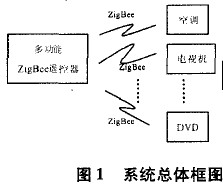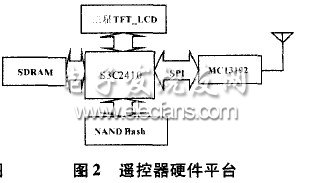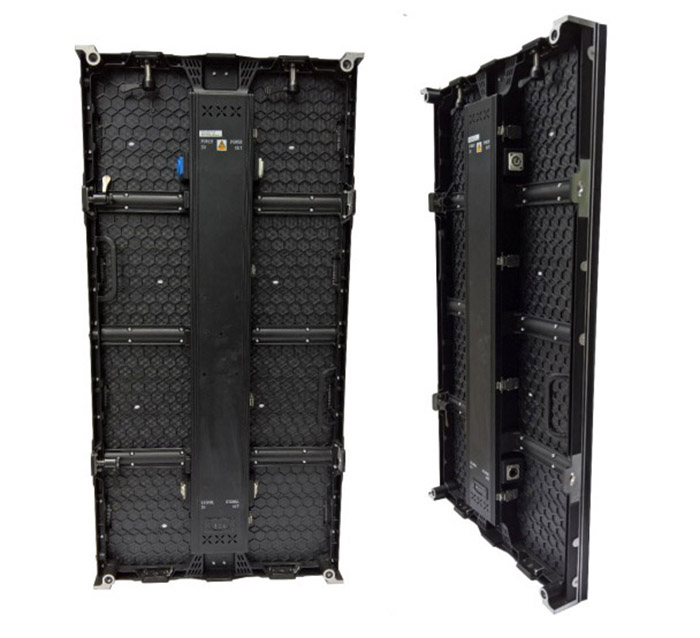introduction
The rapid development of communication technology, embedded technology and information appliances has made the construction of smart home networks possible. ZigBee has become the preferred technical standard for smart home wireless networks due to its low cost and low power consumption.
At present, the commonly used wireless control methods of the general household appliance remote control system include Bluetooth and infrared. The complexity of Bluetooth technology is high, and the cost is too high to meet the requirements of low power consumption, so it has not been popularized in the field of home networking; infrared technology can only achieve point-to-point communication within the visible range, which requires high directivity. It is not possible to form a network flexibly and control multiple terminal devices simultaneously. This article uses the ZigBee wireless technology and embedded system to design a wireless remote control system for home appliances, which can obtain the status information of each terminal device in real time and flexibly control each terminal node in the ZigBee network.
1 Introduction to ZigBee Technology
ZigBee is a set of technical standards related to networking, security, and application software developed based on the IEEE802.15.4 wireless standard. The ZigBee protocol stack is composed of high-level application specifications, application convergence layer, network layer, media access control layer (MAC) and physical layer (PHY).
In the ZigBee network, there are two different types of network devices, one is a device with complete functions, namely a full-function device (FFD), and the other is a device with simplified functions, namely a reduced-function device (RFD). In the network, FFD can usually become a network coordinator or a network route, or it can exist as a terminal device in the network, and can communicate with multiple RFDs or multiple other FFDs at the same time; One FFD communicates, the function is simpler than FFD, easy to realize.
The ZigBee technology network supports two topologies: star network topology, tree network topology, and peer-to-peer peer-to-peer network topology. Each ZigBee network requires an FFD coordinator to achieve network coordination. This article uses a star network topology.
2 The overall architecture of the system
The overall block diagram of the ZigBee appliance wireless remote control system is shown in Figure 1.

2.1 Hardware platform of ZigBee remote control system
The hardware construction of the ZigBee remote control is shown in Figure 2.

As a network coordinator, ZigBee wireless remote controller not only needs to receive and process data from the ZigBee network, but also needs to control the work of each node in the network according to user requirements. The amount of data that needs to be processed is large. The processor s3c241O serves as the core processing chip of the remote control.
s3c2410 is a 16 / 32-bit RIsc embedded microprocessor for high cost performance, low power consumption, small size, high performance and high integration introduced by Samsung. The memory uses 64M NAND nash and 64M sDRAM.
The ZigBee wireless transceiver chip uses the Mcl3192 RF transceiver chip developed by Freescale in accordance with the IEEE8O2.15.4 standard. It works in the 2.4GHz frequency band, supports peer-to-peer, star and tree network structures, and is connected to the Mcu through a four-wire sPI interface.
2.2 Hardware implementation of the terminal node
The terminal node of the remote control system is a module embedded in the home appliance system.
After the ZigBee network is successfully connected, the module is responsible for communicating with the embedded ZigBee remote controller, sending the operating status parameters of the home appliance to the remote controller through the ZigBee network, and receiving control information from the remote controller, and then controlling the home appliance to adjust the parameters to achieve User requirements. The hardware framework of the terminal node is shown in Figure 3.

The function of the device terminal node is to send and receive data and execute control commands. Therefore, the device node has low requirements on the hardware platform. The central processor of the terminal node used in this article is Mc9so8G1'60, and the z-bee transceiver chip is still Mc13192.
Mc9S08GT6O is a low-power, high-performance 8-bit single-chip microcomputer from Motorola. It works at 40MHz frequency and controls Mc13192 through sPI bus.
MC9S08GT60 integrates 60KB F1ash ROM and 4KB RAM, which provides enough storage space for porting the protocol stack.
The soft LED module is ultra-thin, extremely lightweight, and the most flexible design shape, effect, any type, curved at certain angle.
By repeating the bending, it does not damage the LED and the design of the mask cover.
The module is compact and flexible in design, providing more complex shapes for video programs.Directly install the screen with soft LED module, saving time and effort, easy to operate.Magnet connection, easy to disassemble, front maintenance.There is no cabinet metal frame, which greatly reduces the weight of the screen. We can design structures of any shape as needed.Strict quality control and long-term application experience. Using imported chip driver IC to verify stability and excellent performance, achieving high refresh rate and high performance.Widely used in special-shaped stage backgrounds / exhibitions / shopping malls, etc.High definition image.High refresh rate, high gray scale up to 16, it can provide you with richer video and images. The high brightness and high definition features of the curved Rental LED Display ensure high quality pictures - making it the perfect choice for stage, hotel, promotion, station, stadium and other places.
Higher precision and seamless sound.
The ultra-lightweight cabinet is made of die-cast aluminum for superior strength. The flatness of each cabinet is only 0.01mm. The lightweight LED screen display cabinet is designed to be simple and easy to install.
Quick and seamless assembly with hand tools.
You don't need any special tools or skills to install it. Everything is built in and can be installed in minutes using a simple screwdriver.
Available with a +-15° angle. Easy Convex or concave
The unique cabinet design ensures quick installation and easy maintenance. The curved Stage Led Display makes it an ideal backdrop for stage entertainment, bar entertainment and weddings.


Outdoor Curved Led Display,Outdoor Transparent Curved Led Display,Hd Outdoor Curved Led Display,Outdoor Rental Curved Led Display
Shenzhen Bako Vision Technology Co., Ltd. , http://www.rentalleddisplays.com
